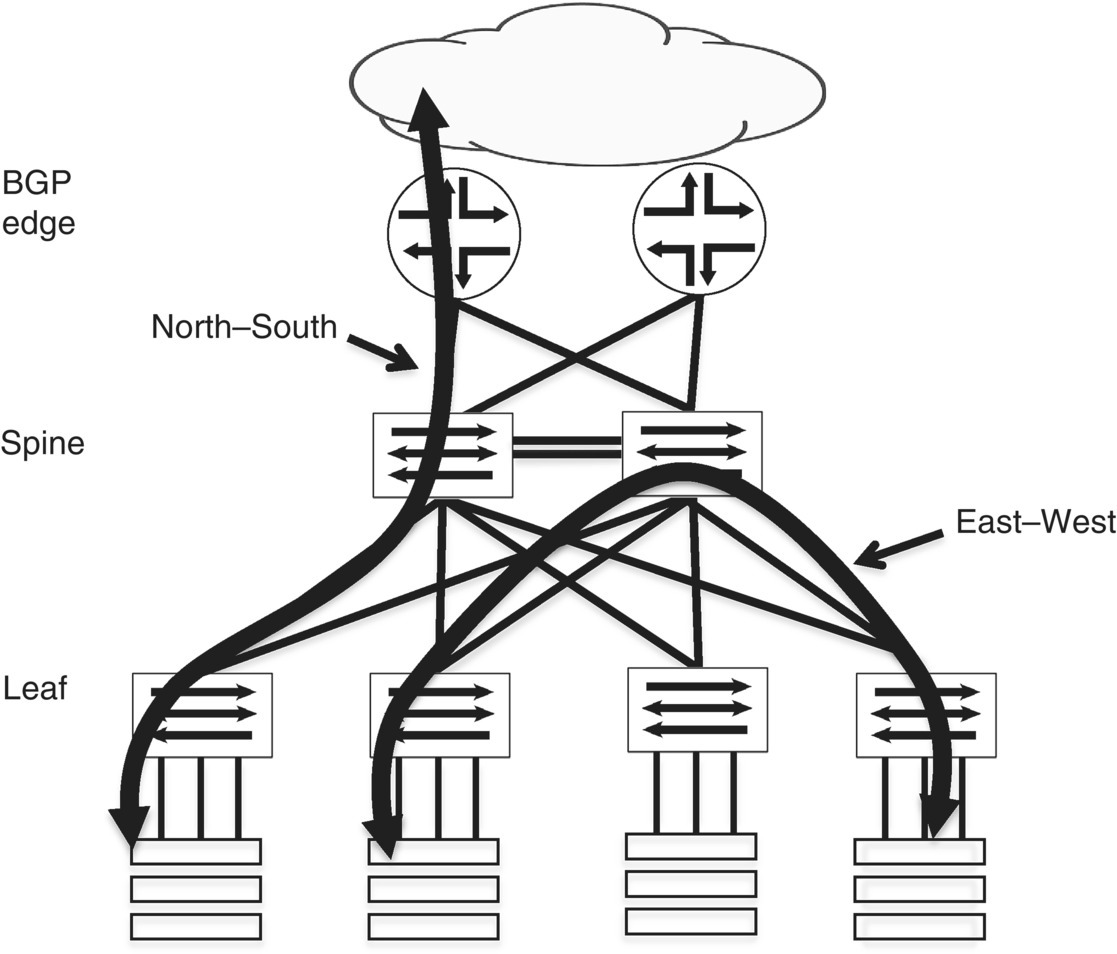10Case Study QOS in the Data Center
QOS in the Data Center—is that an impossible equation? QOS is all about making the best use of the available bandwidth in relation to need and that sometimes means selectively punishing someone while protecting someone else. In brief, it’s overprovisioning as a service, which most often has been applied to end users. But what is the overprovisioning in a Data Center, and what applications or traffic types can be seen as better or worse compared to others? Drops and TCP retransmissions, are those acceptable behaviors in today’s Data Center? And with today’s Data Centers where most of the traffic volume is actually East–West, that is, between bare-metal servers and virtual machines (VM) within the same Data Center (not the legacy North–South traffic model), as illustrated in Figure 10.1, what is an important flow versus a not so important one? One last fact to consider is that end users are hard to identify and applications inside the Data Center are more or less equally important.

Figure 10.1 North–South versus East–West traffic
10.1 The New Traffic Model for Modern Data Centers
The legacy traffic pattern for Data Centers has been the classical client–server path and model. The end user sends a request to a resource inside the Data Center and that resource computes and responds to the end user as illustrated in Figure 10.2. The Data Center ...
Get QOS-Enabled Networks, 2nd Edition now with the O’Reilly learning platform.
O’Reilly members experience books, live events, courses curated by job role, and more from O’Reilly and nearly 200 top publishers.

